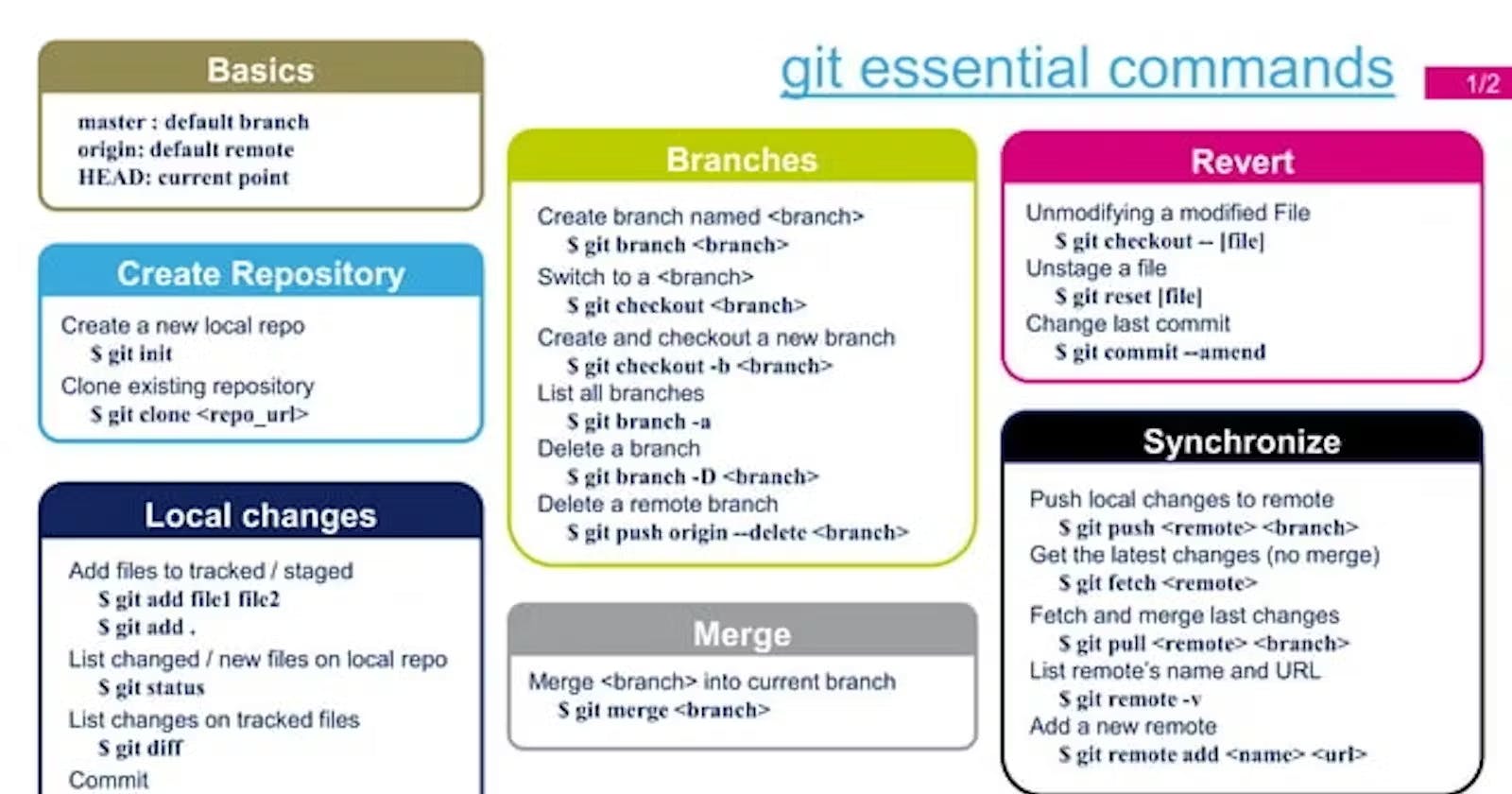Linux Basic Commands
1) To check your present working directory
pwd
2) List all the files or directories
ls
3)Lists hidden files or directories:
ls -a
4) Long listing format:
ls -l
5) Create a new directory:
mkdir <directory_name>
6) Multiple directory creation:
mkdir -p A/B/C/D
7) Remove the directory:
rmdir <directory_name>
8) Remove multiple directories:
rm -rf <directory_name>
9) Remove files:
rm <file_name>
10) change directory:
cd <path_where_to_navigate>
11) create an empty file:
touch <file_name>
12) Copy file:
cp <source_path> <destination_path>
13) Move file:
mv <source_path> <destination_path>
14) To write some content inside a file:
echo <some msg> > <file_name>
15) display the contents of a file:
cat <file_name>
16) show previous commands/operations performed in the shell:
history
17) To search a word (string in a file):
grep "string" <filename>
18) Return the specified number of lines from the top:
head
19) Return the specified number of lines from the bottom:
tail
20) To show disk space:
df -H
21) Specific symbol use
# : root user
$ : normal users
/ : root directory
~ : home directory
22) Access manual pages for all Linux commands
man
23) Show the name of the kernel (OS)
uname
24) Show the version of the kernel
uname -r
25) Clears the terminal
clear
26) Show the current login user name
whoami
27) Show time and date
date
28) Show this month's calendar
cal
29) Details of the recent login of all users
lastlog
30) Change the directory to the home directory
cd ~ or cd
31) Go to the last working directory.
cd -
32) Change the directory to one step back
cd ..
33) Change the directory to 2 levels back
cd ../..
34) Display the username of all users currently logged on the system
users
35) Add a new user
useradd
36) change existing users' details
usermod
37) to delete the user & group
userdel & groupdel
File permissions
To change the permission of the file
chmod <permission> <file_name>
To show file type and access permission
r -read u -user
w - write g -group
x -execute o -other
0 - nothing
4 - only read
2 - only write
1 - only execute
4+1 = 5 read and execute
4+2 = 6 read and write both
4+2+1 = 7 read,write and execute
To change file or directory ownership
chown <user_name> <file_name>
To change group ownership
chgrp <group_name> <file_name>
To create the file and edit it
vim or nano
Compresses and decompresses files
gzip
uncompress archive file
unzip
schedules command (especially backup) to be executed automatically
crontab
Access Control List
setfacl and getfacl are used for setting up ACL and showing ACL respectively.
To check ACL permission:
getfacl <name of file or directory>
To set ACL user permission:
setfacl -m u:user:permissions /path_to_file
User management
To create a new user
sudo useradd <user_name>
To set a password for the user
sudo passwd <user_name>
To modify a Linux user
sudo usermod <user_name>
To delete a Linux user
sudo userdel <user_name>
To add a group account
sudo groupadd <group_name>
Process Management
shows the running processes
ps
kill active processes by process ID or name
kill
view active processes live with their system usage
top
Git Commands:
Initialize an empty git repository Transform the current directory into a Git list of all remote repositories that are currently connected to your local repository.
git init
Clone an existing git repository
git clone <repository_url>
Add files and Moves changes from the working directory to the staging area
git add <file_name>
Add all current directory files to git
git add .
Commit all the staged files to git.
git commit -m "commit_message"
To show the status of your git repository
git status
Git Branch:
To list all of the branches
git branch
Create a new branch
git branch <branch_name>
For going to specific branch
git checkout <branch_name>
For creating and going to that branch
git checkout -b <branch_name>
For deleting branch
git checkout -d <branch_name>
Switches to another branch from the current branch
git switch <branch_name>
git checkout <branch_name>
Removes a branch from git
git branch -d <branch_name>
Git-Logs
shows logs of current branch events with more info
git log
shows logs of branch events in one line
git log --oneline
shows logs in a simple way
git reflog
Remote origin
list of all remote repositories that are currently connected to the local repository:
git remote -v
To add remote origin URL
git remote add origin <remote_git_url>
To remove remote origin URL
git remote remove origin
To upload local repository content to a remote repository
git push origin <branch_name>
To pull your remote repository content to the local repository
git pull origin <branch_name>
To fetch down all the branches from that Git remote
git fetch
To check your git commits and all logs
git log
Git configuration
To set the author name to be used for all commits by the current user
git config --global user.name <your_username>
To set the author email to be used for all commits by the current user
git config --global user.email <your_email>
To merge two branches in Git
git merge <branch_name>
Cherry-pick
Merge just one specific commit from another branch to your current branch:
git cherry-pick [commit_id]
Git revert
Undo a single given commit, without modifying commits that come after it
git revert <commit_id>
Git reset
Go back to the specific commit
git reset <commit_id>
Git rebase
To rebase all the commits between another branch and the current branch state
git rebase <other_branch_name>
Temporary commits
To save modified and staged changes
git stash
list stack order of stashed file changes
git stash list
write working from the top of the stash stack:
git stash pop
Git -squash
combines multiple commits into one
git -squash
Thanks for Reading :)
Shubham Jangale
